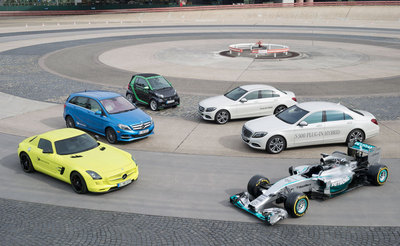MB Takes F1 Technology From Winner's Circle To The Road | Part One
By Henny Hemmes
Senior European Editor
The Auto Channel
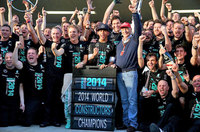 |
Last summer, when Mercedes was already well on its way to win the F1 Manufacturers Championship I was part of a small group of colleagues that joined a workshop in the British development center of the AMG PETRONAS F1-team. We were shown how the cooperation between the Mercedes-Benz engineers and those of the team is resulting in technology transition from race cars into production cars, but also the other way around.
In a time that every company has to find ways to save, it may seem controversial to invest quite an amount of money in the highest ranks of international motor sport. By offering a look behind the scenes, Daimler intends to make the general public aware of the benefits of its efforts, but also to address its own work force in a different way. The employees, of course, are being informed via Daimler’s internal media sources, but when articles appear in their social environment, it will cast another light on their employer’s involvement in Formula 1 racing.
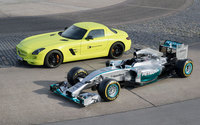 |
“Not everyone who is working in Research and Development is a fan of motor racing,” says Groeneveld, “and therefore they may not fully comprehend our involvement, of which some people think it comes down to billions of euros. It is not that much, but we are indeed talking about millions. Therefore, the question ‘why’ is not so strange.
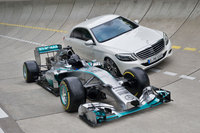 |
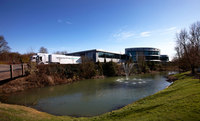 |
The intense collaboration resulted this year for the team in an enormous competitive advantage, a large number of 1-2 victories and – as we all know – in the F1 World Constructors’ Championship.
During the past years, F1-technology has changed considerably and thanks to hybridization it is getting closer to the technology in road cars. Groeneveld: “This was already a bit obvious with the start of the marketing campaign by means of the commercial of the F1 race car and a fast Mercedes hybrid model. Thus we want to show that the technology is not only fascinating, but that F1 is now more important than ever for the development of our production cars.” He does not only mean engine technology, but also innovations in materials, processes and aerodynamics.
In Brackley, Dr. Ralph Weller, head of Power train simulation, said the development of road cars and of F1 race cars have three things in common: downsizing, electrification and charging: “Efficiency equals performance. Because the FIA believed that Formula 1 racing should be more relevant to society, they announced to support solutions to address environmental problems. The technical regulations were changed, focusing more on better performance with less fuel and hybrid drive and allowing F1 race cars with a KERS (Kinetic Energy Recovery System) from 2009. It is a technology where energy is saved as mechanical energy, as in a flywheel, or electric energy, as in a battery or super capacitator.
The new regulations have played into the game of the team, because the fastest lap times can only be realized with maximum efficiency. This has been and still is exactly the goal for the development of Mercedes-Benz production models. Did the production models then benefit from the introduction of KERS in F1 racing? Groeneveld: “Initially it was exactly the opposite. In 2008, after the development of the Mercedes S400 Hybrid, our R&D engineers went to England for the development of KERS for the F1 project. One of them was Jochen Eck, head of the test department who also was involved in the development of the B-Class Electric Drive model and the electric Smart. However, the first steps we made with the F1 technology have been used for series production of the AMG SLS Electric Drive.”
Thanks to the application in the F1 race cars the developments gained momentum. In 2007, KERS weighed 107 kg/236 pounds with an energy efficiency of 39 per cent. Two years later that was reduced to 25.3 kg/ 55.8 lbs and 70 per cent and by 2012 the system weight less than 24 kg/53 lbs and achieved 80 per cent efficiency.
Paddy Lowe, technical director of the Mercedes AMG Petronas team is often asked if there is a technology transition between race and street cars. “Indeed, such drastic steps are reflected in the car community, but the process is more subtle than carrying over parts from one car into the other.
“When developing KERS we contacted a producer of lithium-ion batteries. They were too big for a F1 car, but by stimulating them they developed a cell with a power density that is 10 times bigger than they ever thought possible. Now our hybrid boost system is 80 per cent lighter and 12 times more powerful than in 2007…!”
This has not missed its effect on the Mercedes S 500 Plug-n Hybrid, which is around 35 per cent more efficient than its predecessor. The hybrid drive line with its V6 biturbo engine has 325 kW/435 hp of power and 640 Nm479 pound-feet of torque, sprints in 5.2 seconds from 0-92 mph and can go 33 km/20 miles on electric power alone. It certified fuel consumption is only 2.8 liters/100 km (converted: 84 mpg).
This is just one example of the synergies between F1 and road car development. Please stay tuned to tomorrow’s article on other technologies that are transferred from the race track into production cars.
More on the Mercedes AMG Petronas F1 Efforts in part two



